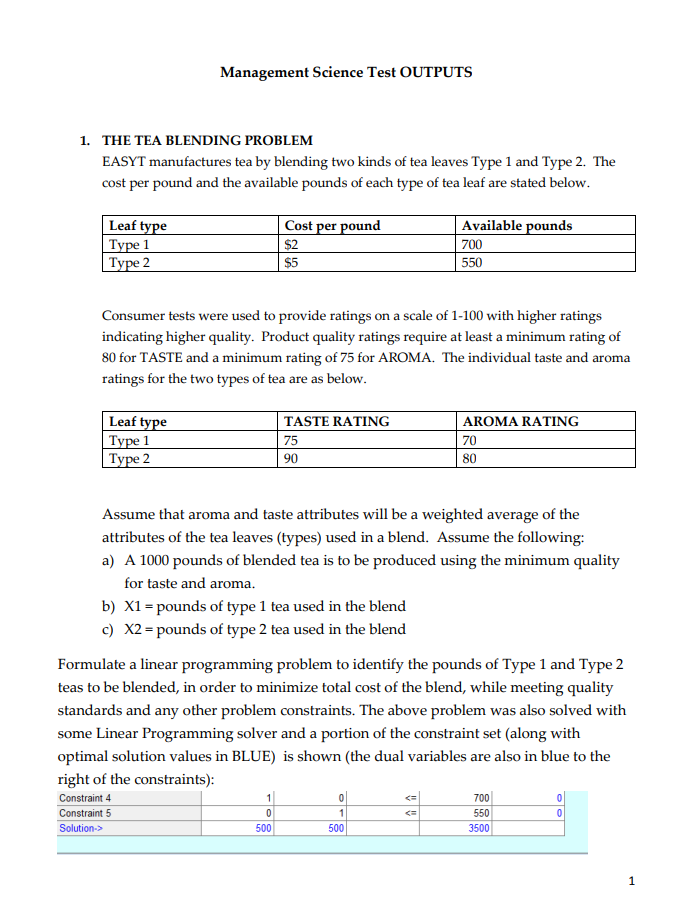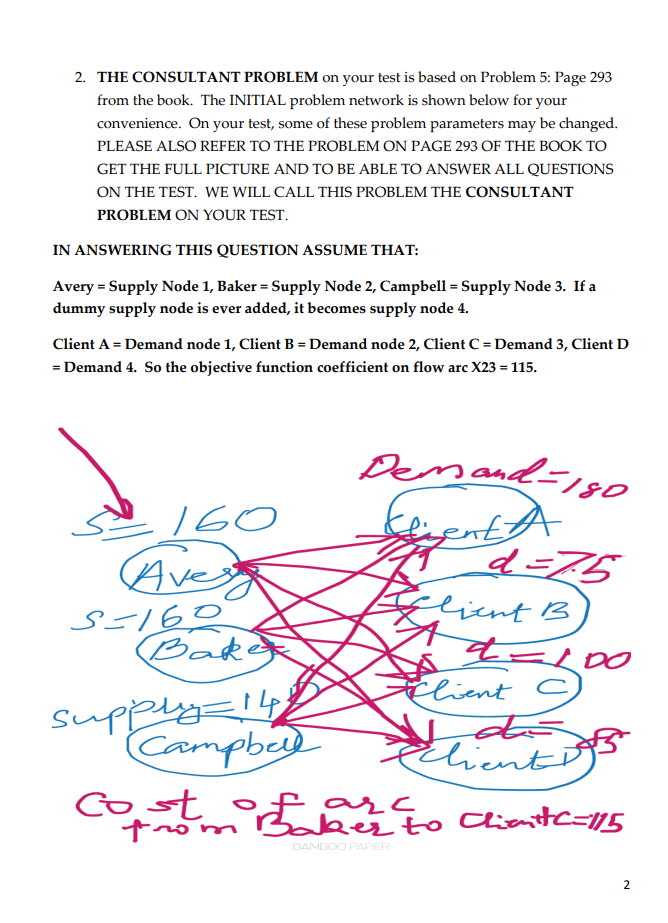Question
1. Answer this question with respect to the CONSULTANT PROBLEM posted in Canvas (Test 6 Output document above). Any proposed changes to the CONSULTANT PROBLEM
1. Answer this question with respect to the CONSULTANT PROBLEM posted in Canvas (Test 6 Output document above). Any proposed changes to the CONSULTANT PROBLEM pertain only to that problem. Do not carry forward changes made in one problem to another problem. Assume that Avery falls sick and loses 30 hours of her work schedule. (and all other parameters are as stated in the original problem). Which of the following statements is true?
The demand for clients A, B and C will now have to be forcibly reduced by 10.
The supply at Averys node reduces to 150
The objective function coefficient will now change in response to Averys sickness.
A dummy supply node with a supply of 10 will have to be added to the problem.
2. Answer this question with respect to the CONSULTANT PROBLEM posted in Canvas (Test 6 Output document above). Any proposed changes to the CONSULTANT PROBLEM pertain only to that problem. Do not carry forward changes made in one problem to another problem. Assume that Avery gets into an argument with client C and client C indicates that Avery is not wanted on her project. (and all other parameters are as stated in the original problem). Which of the following statements is true?
Avery gets assigned to client C immediately
Campbell gets assigned to client C immediately.
Arc X23 is removed from the problem formulation (or set = 0)
Arc X13 is removed from the problem formulation (or set = 0)
3. Answer this question with respect to the CONSULTANT PROBLEM posted in Canvas (Test 6 Output document above). Any proposed changes to the CONSULTANT PROBLEM pertain only to that problem. Do not carry forward changes made in one problem to another problem. Assume that Client C suddenly increases the number of required hours from 100 to 140. In solving the CONSULTANT PROBLEM, which of the following statements becomes true?
X13+ X23 + X33 + X43 = 140 is now a demand constraint of the problem
X31+ X32 + X33 + X34 = 140 is now a constraint in the problem
The profit of the Baker-Client C arc now becomes 140
Bakers supply increases to 140
4. Answer this question with respect to the CONSULTANT PROBLEM posted in Canvas (Test 6 Output document above). Any proposed changes to the CONSULTANT PROBLEM pertain only to that problem. Do not carry forward changes made in one problem to another problem. Assume that Avery falls sick and loses 30 hours of her work schedule. (and all other parameters are as stated in the original problem). Which of the following statements is true?
The new constraint is X41+ X42 + X43 + X44 20
The new constraint is X11 + X12 + X13 + X14 130
The new constraint is X11 + X21 + X31 + X41 = 130
The new constraint is X41+ X42 + X43 + X44 = 130


Step by Step Solution
There are 3 Steps involved in it
Step: 1

Get Instant Access to Expert-Tailored Solutions
See step-by-step solutions with expert insights and AI powered tools for academic success
Step: 2

Step: 3

Ace Your Homework with AI
Get the answers you need in no time with our AI-driven, step-by-step assistance
Get Started


